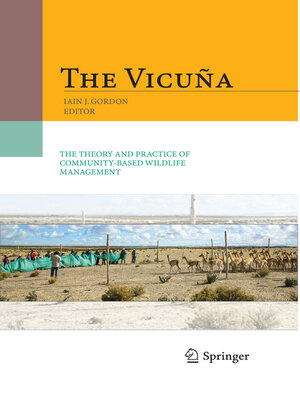
Sign up to save your library
With an OverDrive account, you can save your favorite libraries for at-a-glance information about availability. Find out more about OverDrive accounts.
Find this title in Libby, the library reading app by OverDrive.



Search for a digital library with this title
Title found at these libraries:
| Library Name | Distance |
|---|---|
| Loading... |
Things have changed. In 1969 when the Convention for the Conservation of the Vicuña was drafted, in an attempt to save the vicuña from its tumbling decline towards extinction, both the science and the philosophy of wildlife conservation were radically different. It is thus a tribute to the prescience of those involved at the time that the rescue plan had, even through the harsh lens of hindsight, a d- tinctly Twenty First Century flavour. After all, it was predicated on the expectation that if vicuña could be saved, they would one day become a valued asset, generating revenue for the human communities that fostered their survival. Embodied in this aspiration are the main structures of modern biodiversity conservation – not only is it to be underpinned by science, but that science should be of both the natural and the social genres, woven into inter-disciplinarity, and thereby taking heed of e- nomics, governance, ownership and the like, alongside biology. In addition, it should include, as a major strut, the human dimension, taking account of the affected constituencies with their varied stakes in alternative outcomes. This c- temporary framework for thinking about biodiversity conservation is inseparable from such wider, and inherently political, notions as community-based conser- tion and ultimately sustainable use.







